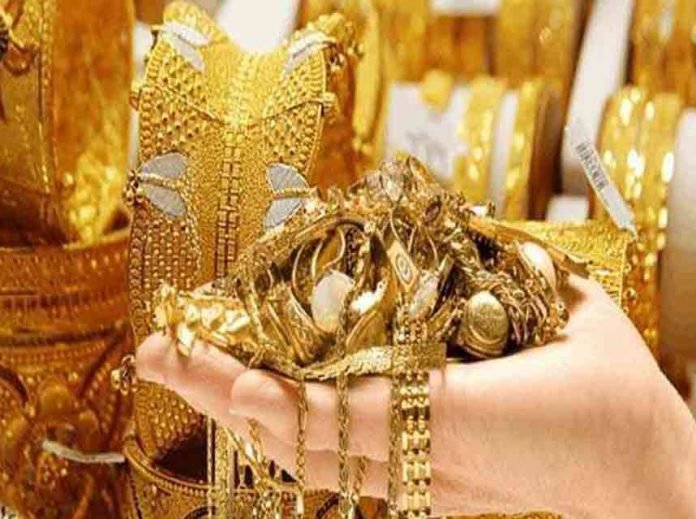After days of record-breaking sales during the Diwali and Dhanteras festive season, gold prices have slipped sharply by ₹2,400 per 10 grams across India. The drop follows global profit-booking and a slight strengthening of the U.S. dollar, marking a temporary cooling-off period in the precious metals market.
Despite the correction, India’s festive gold buying hit an estimated ₹60,000 crore, according to the All India Gem and Jewellery Domestic Council (GJC). This festive season has been one of the most lucrative for jewellers in recent years, reflecting renewed consumer confidence and economic momentum.
📊 The Post-Diwali Price Correction
On October 22, 2025, 24-carat gold was priced at around ₹61,200 per 10 grams in Mumbai, ₹61,350 in Delhi, and ₹61,000 in Chennai — down from ₹63,400 recorded before Diwali. Silver prices also witnessed a minor dip of ₹500 per kilogram.
Market experts say the drop is part of a typical post-festival adjustment. “Every year, after Dhanteras and Diwali, we see traders booking profits, which slightly pushes prices down. The fundamentals of gold remain strong,” said Ajay Kedia, Director of Kedia Commodities.
He added, “The global gold outlook remains bullish due to ongoing geopolitical tensions and inflationary concerns. Investors should see this dip as a buying opportunity rather than panic.”
💬 Experts Weigh In
Economists believe that the gold market in India is stabilizing after an intense wave of buying. Dr. Nisha Sharma, a senior economist at the Indian Bullion Federation, explained,
“The demand surge this year was unprecedented. While the price correction may seem sharp, it’s temporary. India’s traditional affinity for gold ensures long-term stability in demand.”
Additionally, the U.S. Federal Reserve’s monetary stance and the strength of the dollar index continue to influence international gold prices. Any hints of interest rate cuts or global uncertainty tend to make gold more attractive, leading to future price recoveries.
🛍️ Record-Breaking Festive Buying
Jewellery showrooms across the country reported massive footfall during Dhanteras (October 20) and Diwali (October 21). Leading brands like Tanishq, Kalyan Jewellers, and Malabar Gold reported up to a 35% surge in sales compared to last year.
Consumers were driven by both tradition and investment motives. “Gold is not just a metal; it’s an emotion for Indian households,” said Ramesh Shah, a jeweller in Mumbai’s Zaveri Bazaar. “Even with high prices, customers wanted to buy at least a small piece for good luck.”
Rural demand, which had been subdued in previous years due to inflation, also saw a strong rebound this year thanks to a good monsoon season and stable agricultural income.
🌍 Global Market Influence
Internationally, gold prices have hovered around $2,340 per ounce, slightly below last week’s highs. The dip is primarily attributed to traders taking profits after strong gains earlier in the month.
Geopolitical factors — particularly the Russia-Ukraine conflict, tensions in the Middle East, and slower economic growth in China — continue to support gold as a “safe-haven” investment. Analysts predict that by early 2026, prices could rebound once global central banks adjust their policies.
📈 Investment Outlook for 2025–26
Financial planners believe that the current correction presents a good entry point for new investors. Gold ETFs, sovereign gold bonds (SGBs), and digital gold platforms have all gained traction among younger buyers.
“Those who missed buying during Diwali should use this dip as a strategic buying window,” said Vineet Mittal, a financial advisor with Motilal Oswal. “Over the next 12 months, gold could easily touch ₹65,000–₹67,000 per 10 grams, given the macroeconomic scenario.”
⚖️ Key Takeaways
Gold prices fell by ₹2,400 per 10 grams after Diwali 2025.
India’s festive gold buying hit ₹60,000 crore this season.
Experts call the dip temporary and recommend long-term investment.
Global factors, including inflation and geopolitical risks, will shape future trends.
Investors can benefit from ETFs and SGBs during this correction phase













